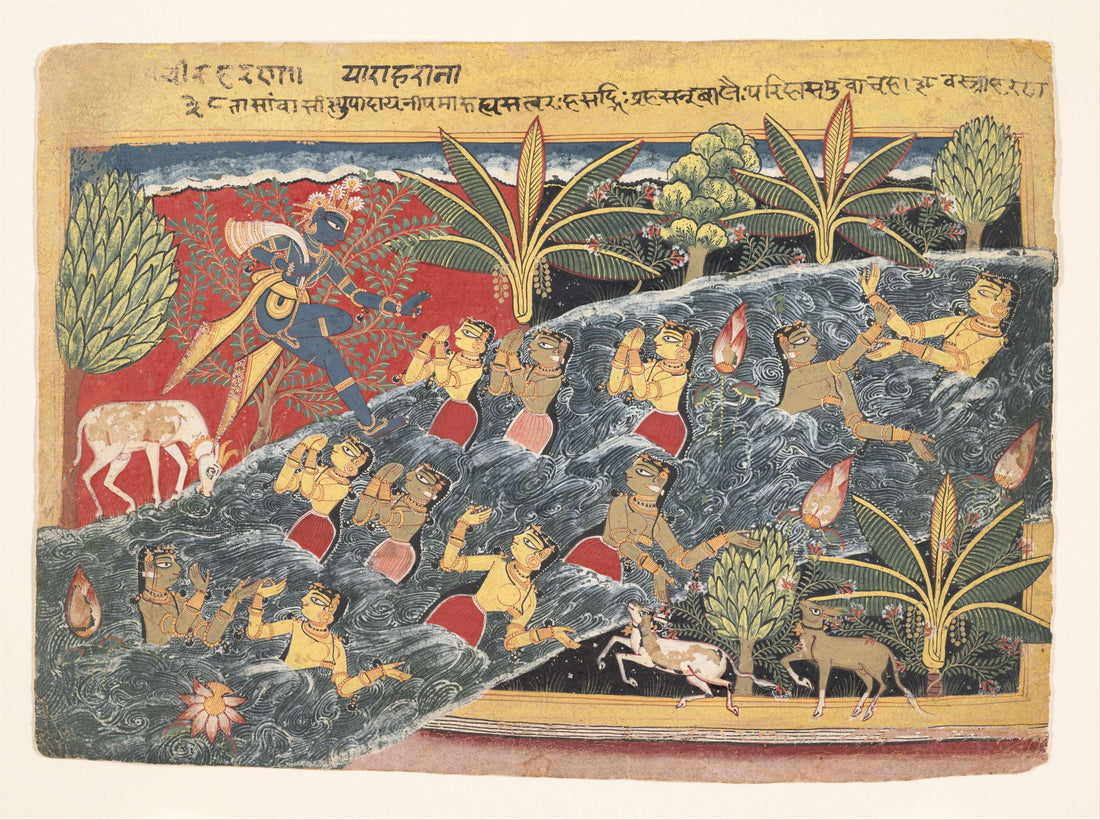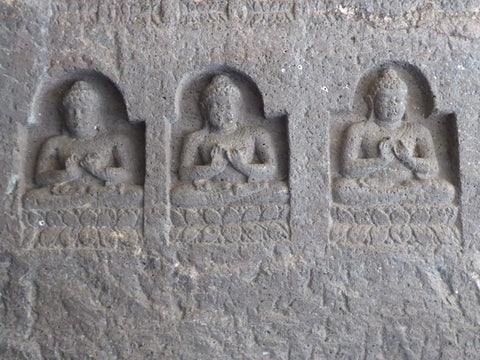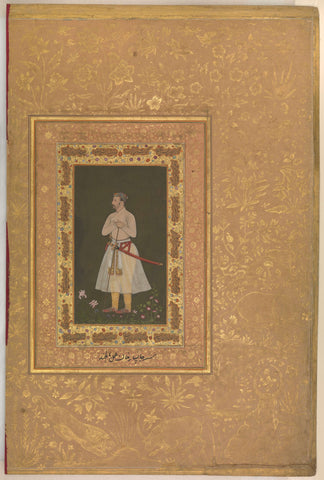
A brief on the Indian floral patterns
Patterns inspired by nature (flowers, plants and animal) have been used for centuries in India. Buddhist temples or Buddhist carving done in caves, dating as early as third century BC, often used flowers like lotus.

Pic: Stone carving showing Buddha sitting on lotus
Until twelfth century, floral patterns were mainly used as filler patterns in paintings and carvings in India. During the twelfth century, when Islamic art started to influence and infuse with Indian art and design, floral patterns became more widespread. In the Islamic faith, Paradise is explained as a stunning garden filled with lush vines, gently scented by blooming flowers and laden fruit trees, invigorated by sparkling fountains and flowing streams. This explains the special place floral patterns occupy in Islamic art.

Pic: Floral pattern on our wine stopper.
In the seventeenth century, florals were arranged in single rows and were naturalistically drawn. Towards the end of seventeenth century, patterns lost the leaves & stems and tended to focus more on the flower itself.

Pic: "Portrait of Jahangir Beg, Jansipar Khan", Folio from the Shah Jahan Album. verso: ca. 1627; recto: ca. 1530–50.
There were many influences over the centuries including from foreign markets like Europe, Indonesia, Thailand. The market trade forces and this amalgamation of art led to specific designs for many regions around the world. Some of the notable patterns were ikat leaf patterns, botehs or buties (paisley).
In our product range, you would often find use of floral patterns which have been either carved, engraved or hand-painted. For example, this Menorah draws from the floral patterns in its own unique way.

We are deeply in love with floral patterns. There are so many designs, colours, orientation. This lends so well to a million ways in which these beautiful patterns can be incorporated in different handmade products.
References for this blog post -
- Book: V&A Pattern Indian Florals
- Website: https://www.metmuseum.org/
